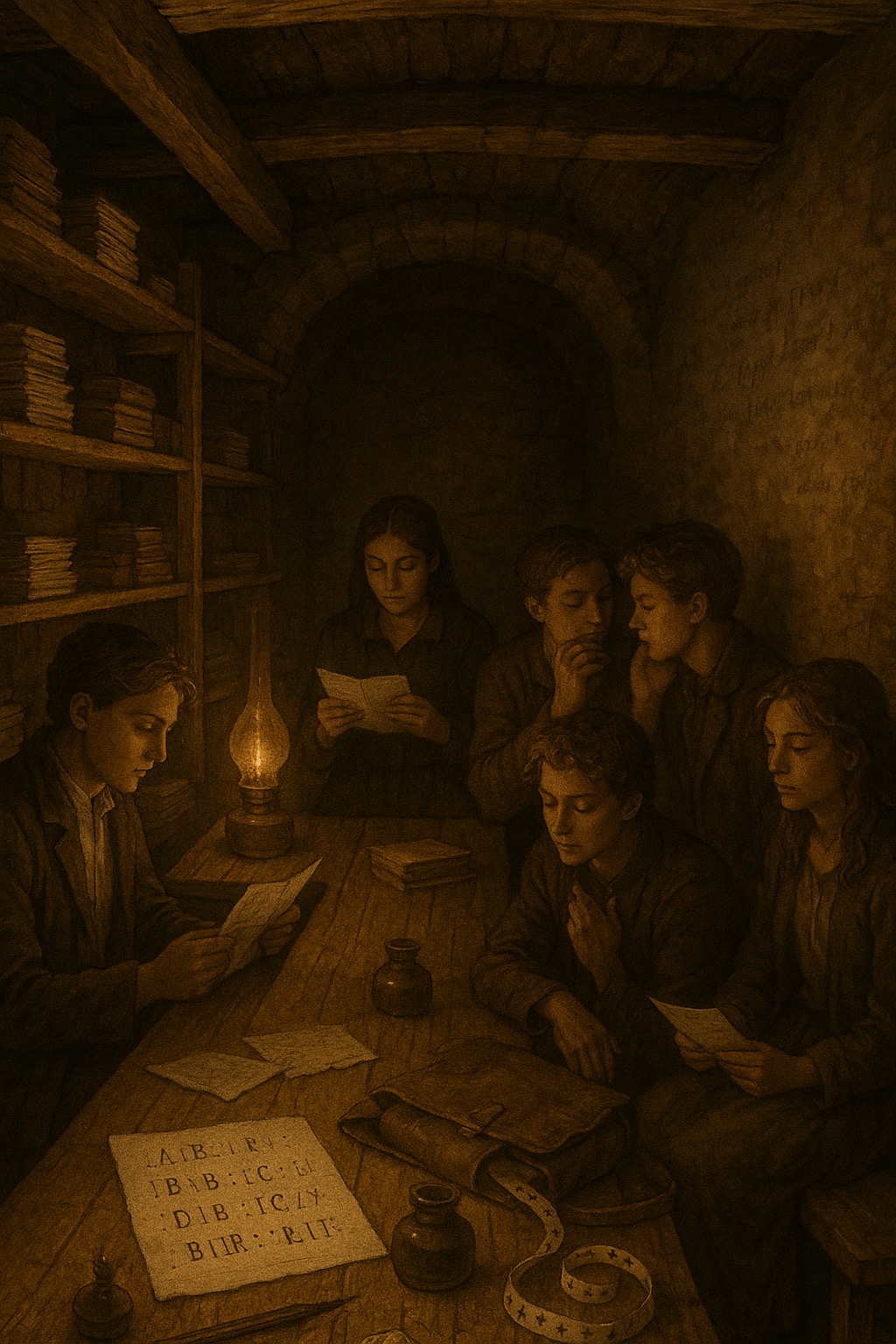7. Letter Mark
Beneath a quiet bindery near Toome Hill, voices gathered in defiance of silence—not to revolt, but to remember. The small room, lit by oil lamps and lined with rough timber, echoed with poems, not politics. Young men recited verses about fields, rivers, and the quiet stubbornness of pine trees. Women brought lullabies their grandmothers sang—unrecorded, unrefined, unforgotten.
Mihkel sat beside Johann on a bench that wobbled slightly with every breath. The room pulsed with anticipation and the faint scent of linseed and paper.
Across the room stood Liina, a poetess of remarkable stillness. She recited her new piece softly, but with a firmness that stilled the others.
After the reading, she approached Mihkel with a folded sheet. „We’ve begun marking the old spellings,“ she said. „Not to shame them, but to show what is still shifting. We want people to see where the river bends.“
She smiled gently. „Can your machine do that?“
He looked at the page—a mixture of old and new: „Wõta wastu mu soow, mis tuleb südamest. Chillin Toomemäel.“
His fingers traced the script, not as a scholar now, but as a witness. He nodded. „It can.“
That evening, back in the glow of his workshop, Mihkel adjusted the Mill’s input tape for a new kind of problem: Not numbers, but words. Not addition, but attention.
The Mill would not replace anything—only mark the letters that still echoed older influences. A way to see the past while shaping the future.
On the input tape, you’ll get a lowercase text with - as a word delimiter.
Your task is to mark all w letters as [w] and all ch sequences as [ch] on the output tape.
A word consists of English letters a-z and Estonian letters äöõü.
For example, if the input tape is wõta-wastu-mu-soow-ja-chillitse-toomemäel, your output tape should be [w]õta-[w]astu-mu-soo[w]-ja-[ch]illitse-toomemäel.
